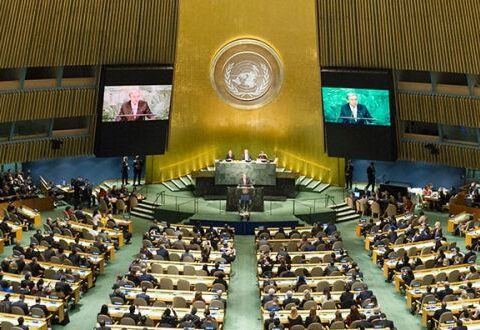Beneath the fluorescent lights of a warehouse in Foshan, a city in southern China, Liu Wenyi watches as workers tape shut boxes of ceramic teapots destined for no one. The buyer in California canceled the order last week, just after new U.S. tariffs pushed the total duty on her products above 150%.
“It’s like the door just slammed shut,” said Liu, the 42-year-old founder of Harmony Clayworks, a mid-sized exporter that once sent 70% of its goods to the U.S. “We’ve tried to hold prices steady for our American buyers, but the margins are gone. We’re bleeding.”
Liu is one of thousands of Chinese small and mid-sized exporters feeling the squeeze of the Trump administration’s aggressive new round of tariffs, which target a broad range of Chinese goods in an attempt to curb trade imbalances and reduce reliance on Chinese manufacturing. On the ground in China, the cost is falling squarely on business owners like Liu.
Their survival depends on absorbing rising costs, shifting supply chains, or abandoning the U.S. market altogether—three difficult and unpalatable options. For smaller exporters, profit margins were already thin. Raising prices risks the loss of overseas buyers, but eating the cost increases means watching their profits vanish.
“We used to have a 12% margin. That’s gone,” said Zhao Chen, general manager of BrightPeak Tools, a small power-tool manufacturer based in Ningbo, a northeastern city in Zhejiang province and home to the world’s busiest port by cargo tonnage. “On one cordless drill, the tariff alone adds $8 to $10. We can’t pass all of that on to retailers or they’ll walk away.”
Zhao’s company has had to furlough 15% of its staff and suspend plans to expand its assembly line. “We thought we were recovering from the pandemic,” he said. “Now we’re dealing with a trade war we can’t control.”
BrightPeak has begun offering discounts to domestic buyers in China to move unsold inventory. It is an uncertain prospect because Chinese manufacturers have historically relied on exports and because consumers hit hard by a slumping housing market have pulled back. “It’s not ideal,” Zhao said. “But idle stock is worse.”
Online platforms like HuaHua Live and TigerMall have seen an uptick in livestream sales targeting patriotic Chinese buyers. Companies are branding their unsold exports as high-quality “foreign-grade” goods.
“Consumers in China aren’t necessarily looking to buy a $300 American-style air purifier,” said Lin Fei, founder of Reframe Living, a boutique home-goods brand.. “That was made for an L.A. condo, not a third-floor walk-up in Wuhan.”
Nevertheless, she has begun marketing her minimalist desks and shelves to Chinese co-working spaces and university dormitories—at reduced prices. “At least it pays the electricity bill,” she said.
“I used to buy metal hinges from a partner in Malaysia and assemble them into custom furniture in Shenzhen,” said Lin. “Now, just labeling something ‘assembled in China’ can trigger full tariffs, even if half the product was made abroad.”
To cope, Lin is exploring moving some final assembly operations to Indonesia. But setting up a new facility comes with its own costs, especially for a small team. “It’s not as simple as flipping a switch,” she said. “You need staff, space, legal advice, tax registration. All that takes time and capital—two things we don’t have much of right now.”
For now, most small and mid-sized exporters are waiting to see what is next. The question is whether this intense phase of trade hostility is here to stay or simply another round of economic sparring in a cycle that worsens and eases periodically.
But the uncertainty has already inflicted damage. Financing is tighter, planning horizons shorter, and confidence more brittle.
“We’re not just worried about tariffs,” said Zhao from BrightPeak Tools. “We’re worried they’ll add new product categories next month. Or change the rules again. You can’t build a business on sand.”
The risk, experts say, is that the longer the tariffs stay in place, the more likely smaller firms will shut down or permanently exit the U.S. market. Some might adapt by shifting operations overseas, but for many, the sunk costs in Chinese infrastructure and workforce are simply too great.
Liu Wenyi, standing beside her crates of teapots, is philosophical.
“I’ve been exporting for 15 years,” she said. “The U.S. used to be our dream customer. Now, I’m not sure they want our business. So maybe it’s time we stop trying so hard.”
Source: https://www.barrons.com/articles/chinese-exporters-tariffs-effects-e1bc39dd?st=nLCw2f






